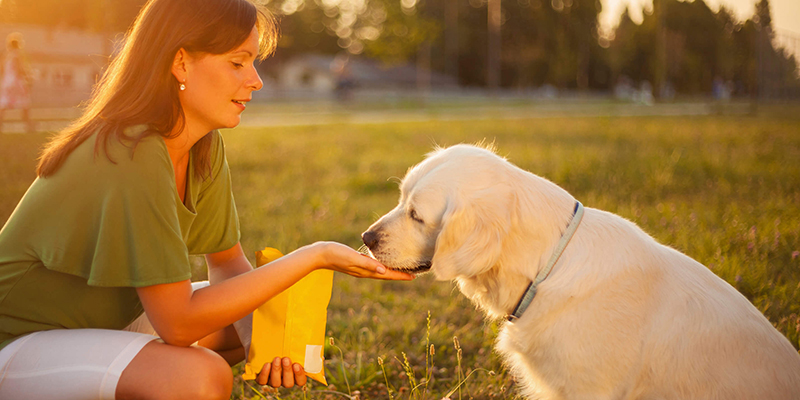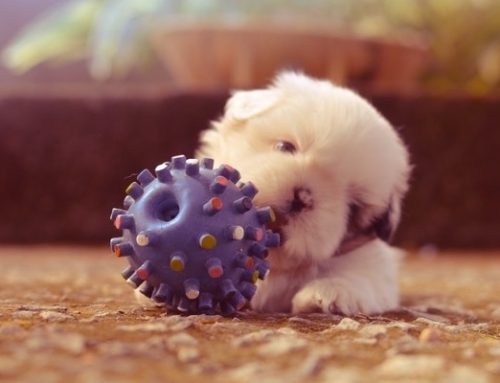“A trained dog is a happy dog,” as the saying goes.1 Well-trained dogs are a joy to have around, and are welcome almost anywhere because they know how to behave around people and other dogs.
Trained dogs come when called and can be trusted to stay when told. While laws require dogs to be leashed in many public places, a trained dog doesn’t need to be on a leash or line when in areas without such requirements.2
Types of Training
Dogs can be trained in multiple disciplines using a range of positive training methods, including clicker training, food-based training and the praise-reward method. The most common discipline for pet dogs is Companion Dog training, which covers basic obedience skills. If you’re very serious about training your dog, you can help him work toward earning American Kennel Club Canine Good Citizen (CGC) certification.3Whether your dog completes the CGC or not, once he has basic obedience skills, he can take part in other disciplines like herding trials, therapy and agility.4
What Age Should You Begin Training?
Cesar Millan, a recognized authority on many areas of dog training, believes you should begin training a puppy right away,5 at least in terms of housebreaking and accepting you as his “pack leader.”VCA Animal Hospitals, which operates more than 600 veterinary clinics in 42 states,6 recommends teaching simple commands, such as “come” and “sit,” starting at 7 or 8 weeks of age.7 Puppies have short attention spans, which has traditionally resulted in formal training being delayed until around 6 months, but it’s unnecessary to wait that long.
Developing a Training Program
Training your dog is an ongoing process that lasts for a lifetime. You can teach him the basics and expect him to retain knowledge, but to achieve the best results, following a comprehensive plan and using ongoing reinforcement is essential. To keep your dog on track, create your plan in writing, according to stages of your dog’s life or the types of skills you want him learn, and refer to it regularly.
Building an Unbreakable Bond
Bonding with your dog is vital to successful training, so take steps to cement your bond early, even before your puppy is ready to learn commands. According to Florida-based dog trainer Martin Deeley, member of and contributor to the International Association of Canine Professionals, building a bond begins the day you meet your new puppy.8
Start by encouraging your puppy to come into your hands; hold him gently but firmly and speak softly to calm his fears. Create confidence by stroking and cuddling him. If he struggles, restrain him with gentle pressure until he’s relaxed.
Regardless of the age of your dog, as the person who feeds him, plays with him and provides loving touches at every opportunity, you’ll continually bond with your dog.
1. Getting Started
Whether you adopt a puppy or an older dog, you can teach him obedience basics. Older dogs have longer attention spans than puppies, but regardless of the age of your dog, training sessions should be kept brief, take place frequently and be filled with fun and praise to succeed.9 Playing with a ball or other toy can be a great motivation tool. Food is also an excellent training aid. Many pet owners are reluctant to use food as a reward, because they don’t want their dog to learn to accept “bribes,” become greedy or gain extra weight. However, healthy treats are useful in moderation.
Developing “Ball Drive”
Since most dogs love playing with a ball, you can teach a puppy “ball drive” from the age of 5 weeks, regardless of breed or size. Simply put, ball drive is the building of an intense interest in a ball, so playing with it becomes a reward your dog enjoys after having successfully performed a command. Some breeds have ball drive in their natures, others can learn fairly easily. The earlier you start the better. Although it isn’t impossible to teach an older dog, it can be more challenging.
Here’s how to teach your dog ball drive, whatever his age:
- Start by sitting on the floor with your dog. A young puppy is unlikely to move far or fast, so he won’t require a leash for this exercise. For an older puppy or full-grown dog, attach a short leash to the collar and have a supply of treats close at hand. Roll the ball around slowly until you capture the dog’s interest. When he responds, make a fuss to generate excitement.
- Reward the dog with physical praise, verbal encouragement and an occasional treat, if he is old enough. Gradually roll the ball farther and farther away, and let the dog go after it. When he picks it up in his mouth, draw him gently back to you using the leash.
- Do this for a short time every day, and don’t leave the ball lying about between sessions. The ball is your training tool, not a toy; unlimited access can reduce its effectiveness.
You can use more advanced methods to continue building ball drive throughout your dog’s life to keep him motivated.
2. Learning the Basics
Teaching your dog to come when called is one of the most basic and essential commands — one that will keep your dog safe and give him the freedom of being unleashed when possible.11
To teach an older dog to come when called, put him on a leash, hold the end, and move backward the length of the leash. Say the dog’s name and “come,” and draw him to you using the leash. Move backward again, encouraging the dog to follow you, and then stop to allow him to reach you. Reward him with praise and a treat. When teaching a young puppy, position yourself six feet away and call him toward you; reward him with praise when he complies.
3. Using Feeding Time as a Training Opportunity
Feeding time provides an ideal opportunity to teach obedience fundamentals. Your dog will learn that he has to “work” for food, and that getting fed is often accompanied by other activities and praise. Mealtime training also helps to reduce the risk of food aggression. Don’t teach more than one command at a time though, as that will confuse a young puppy and might be too much for an older dog new to learning.
Choose one of the following commands and practice it at feeding time for about two weeks before moving on to the next. When your dog is comfortable responding to both commands, practice them alternately for a few weeks before using both commands in a single session.
Teaching the “Come” Command
- Place your dog in his crate or have someone hold his collar or leash while you prepare his meal.
- Once his food is prepared, free him and the stand with the food in your hand while giving the “come” command.
- When your dog runs toward you, praise him, and then put the food down and allow him to eat.
Teaching the “Sit” Command
- Let your dog walk around freely while you prepare the meal. When ready to feed him, stand with the bowl in your hand to get his attention.
- Call his name and say “sit” while holding his food bowl slightly above his head.12 This will cause him to look up at the bowl, which often results in sitting.
- If your dog moves backward instead of sitting, press on his hindquarters at the same time as you lift the bowl; be sure to again say his name, followed by “sit.”
- When your dog obeys the command, put his food bowl down, praise him, and allow him to eat without delay.
You can teach these basic commands to puppies as young as 6 weeks old, practicing daily, either at mealtimes or using treats.
4. Joining a Training Class
Training your dog on your own is a fun and rewarding process, but if you need help, training classes are an option. Visit the Association of Professional Dog Trainers to find an experienced trainer in your area.13 Single out those who specialize in the use of positive reinforcement, and then take the time to observe the training methods used before signing up to make sure you are comfortable with the various practices.
Practice Makes Perfect
Lifelong training helps to keep your dog mentally stimulated, ensure his safety and happiness, and enable him to be a true companion, no matter where your journey together takes you. Using healthy treats with a proven nutritional blend, that are low in calorie as a reward during training helps you reinforce the lessons learned.
SOURCES:
- Inga From, CPDT-KSA, “A Well Trained Dog is a Happy Dog! ” Midwest Animal and Rescue Services
- Jack Volhard, Wendy Volhard, “Canine Good Citizen Test In A Day For Dummies,” John Wiley & Sons, July 30, 2012
- “Getting Started in Obedience ,” American Kennel Club.
- “Schutzhund Training,” United Schutzhund Clubs of America.
- Cesar Millan, “Starting your puppy off right! ” Cesar’s Way.
- VCA Animal Hospitals, “About VCA,” Debra Horwitz, DVM, Gary Landsberg, DVM, “Puppy Behavior and Training – Training Basics,” VCA Animal Hospitals.
- Martin Deeley, “Seize the Opportunity,” International Association of Canine Professionals.
- The Association of Professional Dog Trainers, ” What are Some of the Common Myths About Dog Training?”
- Video, “Building Dog Ball Drive,” Polite Paws.
- The Humane Society of the United States, ” Teaching Dogs the “Come” Command.”
- American Canine Training. “How to Teach Your Dog to Sit.”
- The Association of Professional Dog Trainers, “Dog Trainer.”





